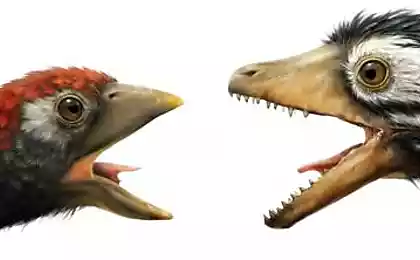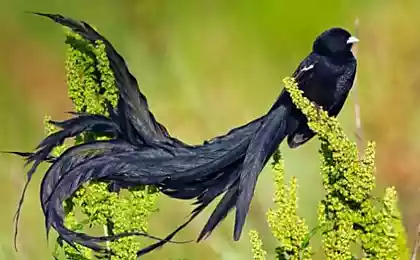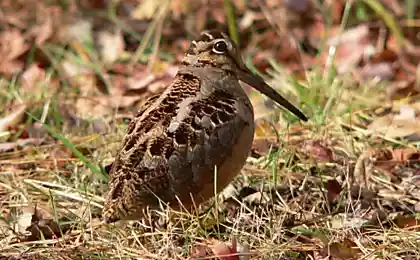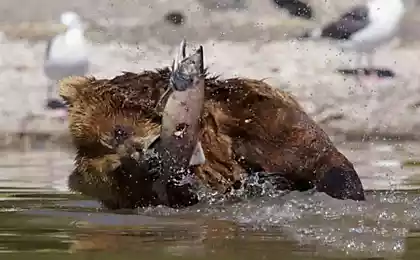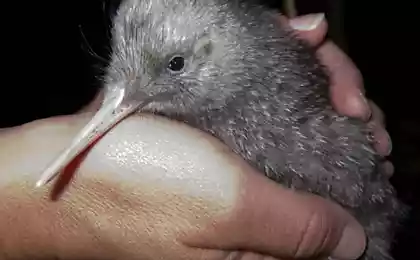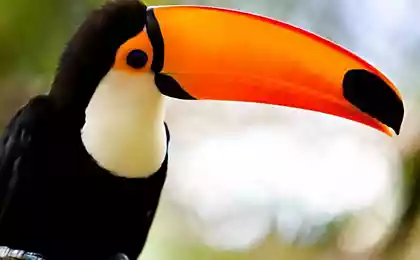596
Gulidova of finches, bird family of finches weaverbirds
Gulidova amadina (lat. Chloebia gouldiae) is a bird of the family of finches weaverbirds living in the North of the Australian continent.
To the propagation gulovich finches among other district Kimberly is the hottest region in the entire southern hemisphere. Daytime temperatures reach 40 and 45 °C in the shade. At night the temperature rarely falls below 35 °C. November to April are very heavy rains. Humidity at this time is 80 to 90%.
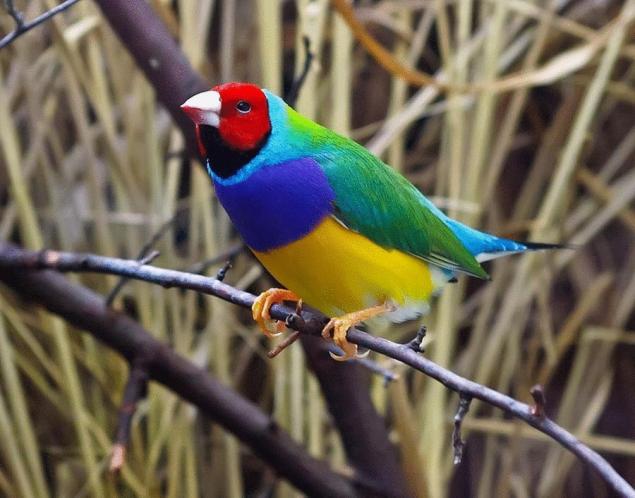
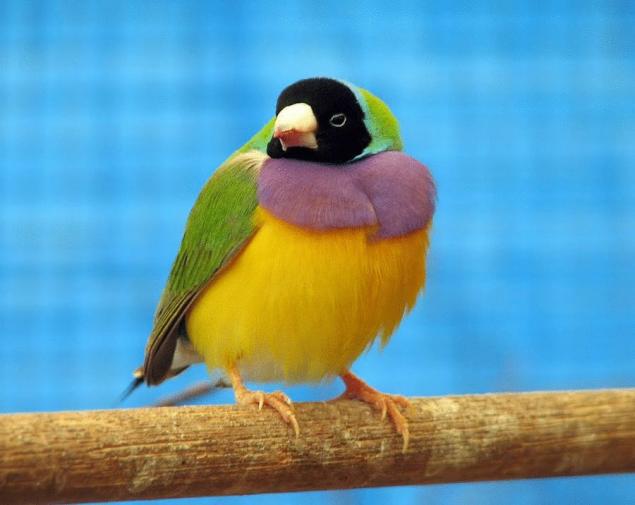
Gulidova finches adapted to these extreme climatic conditions. They are very mobile at temperatures from 30 to 45 °C, taking long sun baths. Other birds, on the contrary, at these temperatures shaded. In Northern areas the birds also prefer seasons, when both are dominated by high daytime temperatures and high humidity. At this time they are looking for prozrenie seeds and insects, which belong to their diet.
Gulidova finches is very colorful birds, whose plumage of the head can vary greatly. In wild nature there are black-, red -, and yellow-headed options. Color the heads of young birds are gray, changing with puberty.
British naturalist and artist-animal painter John Gould discovered this species during his journey to Australia in 1838 and 1840-th years, making his scientific description in 1844. In memory of his wife Elizabeth Gould accompanied him on these trips and soon after that he died, he named a species of Finch lady Gould (Lady Goulds Amadine). Described by Goldom birds were black-headed morfou gulovich finches. Red heads and yellow-headed variants of this at the time of their discovery considered a separate species.

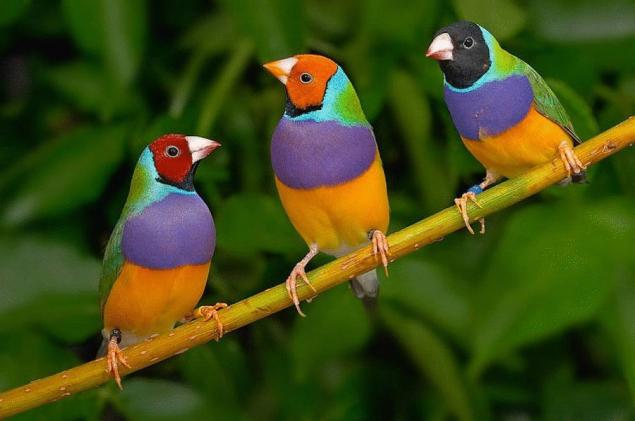
Blackheads gulidova finches are the most frequent in nature birds. Blackheads birds with yellow-tipped beak genetically citrine. They have black melanin overrides the yellow "mask" on her face. Yellow-headed birds are very rare in nature. One yellow-headed bird we have about 3 000 black heads and red heads of individuals. The yellow color of the head occurs due to a mutation. Birds with this coloring of the head can not turn yellow carotenoids into red pigments of the feathers.
Have red heads and yellow-headed birds black stripe on the back of the head separates the rest of the plumage of the head. All color options on the back of the head and throat, in addition, there is a blue stripe, gradually turning into green plumage of the back.
Birds experiencing an instinctive fear of the red, so red heads win fights for food in 81.5% of cases. In addition, female mating with a male not of his color, that occurs approximately in 30% of cases, increases the number of males in a brood to 72%.
The tail coverts have gulovich finches also green. Stands out a purple chest, sharply separated from the yellow of the belly, which brightens in the direction of the tail is almost white. Tail and tail coverts blue. Blue is also the century ring that surrounds a dark brown radugina eyes.
The length of the bird is about 11 cm in both sexes. From the head to the tips of both middle feathers of the tail length is between 13 to 15 cm.

Gulidova finches have become rare birds in their homeland, so klassificeret IUCN as an endangered species. Globally this species because of its colorful feathers kept as decorative birds.
Snakes and prey birds are the natural enemies of adult birds. Snakes are probably the reason why birds spend the night on the thin branches of trees.
The Chicks are threatened by a number of other animal species. The ants eat young birds if they find them in the nest. Also some species of flies lay their eggs in the nests so that the hatching larvae eat young birds. Small lizards are also enemies of the Chicks.
Because of the beautiful plumage gulovich finches are often kept in captivity, despite the fact that it is quite delicate and demanding in terms of poultry. Gulidova finches require a high temperature (not below 25 degrees, and the nesting period is 28 — 30), can not stand the cold and draughts. These birds love to bathe in fresh water and often drink.
Gulidova finches often throw the clutch or Chicks, therefore, for successful breeding you need to simultaneously have a pair of Japanese finches, which can lay eggs or Chicks. Due to the fact that in nature they are very rare, and their capture is prohibited, all gulidova finches contained in the cells currently grown in captivity.
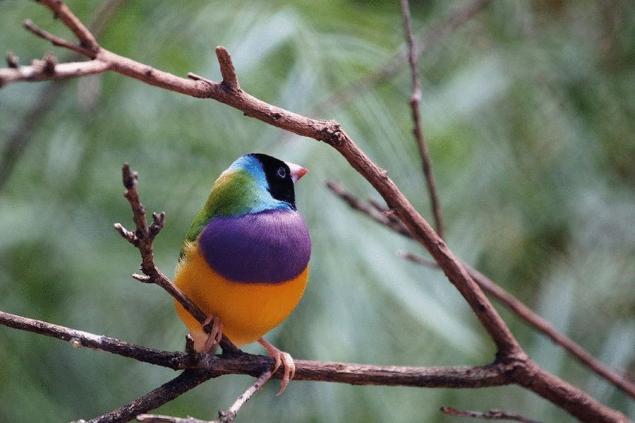
Source: /users/104
To the propagation gulovich finches among other district Kimberly is the hottest region in the entire southern hemisphere. Daytime temperatures reach 40 and 45 °C in the shade. At night the temperature rarely falls below 35 °C. November to April are very heavy rains. Humidity at this time is 80 to 90%.


Gulidova finches adapted to these extreme climatic conditions. They are very mobile at temperatures from 30 to 45 °C, taking long sun baths. Other birds, on the contrary, at these temperatures shaded. In Northern areas the birds also prefer seasons, when both are dominated by high daytime temperatures and high humidity. At this time they are looking for prozrenie seeds and insects, which belong to their diet.
Gulidova finches is very colorful birds, whose plumage of the head can vary greatly. In wild nature there are black-, red -, and yellow-headed options. Color the heads of young birds are gray, changing with puberty.
British naturalist and artist-animal painter John Gould discovered this species during his journey to Australia in 1838 and 1840-th years, making his scientific description in 1844. In memory of his wife Elizabeth Gould accompanied him on these trips and soon after that he died, he named a species of Finch lady Gould (Lady Goulds Amadine). Described by Goldom birds were black-headed morfou gulovich finches. Red heads and yellow-headed variants of this at the time of their discovery considered a separate species.


Blackheads gulidova finches are the most frequent in nature birds. Blackheads birds with yellow-tipped beak genetically citrine. They have black melanin overrides the yellow "mask" on her face. Yellow-headed birds are very rare in nature. One yellow-headed bird we have about 3 000 black heads and red heads of individuals. The yellow color of the head occurs due to a mutation. Birds with this coloring of the head can not turn yellow carotenoids into red pigments of the feathers.
Have red heads and yellow-headed birds black stripe on the back of the head separates the rest of the plumage of the head. All color options on the back of the head and throat, in addition, there is a blue stripe, gradually turning into green plumage of the back.
Birds experiencing an instinctive fear of the red, so red heads win fights for food in 81.5% of cases. In addition, female mating with a male not of his color, that occurs approximately in 30% of cases, increases the number of males in a brood to 72%.
The tail coverts have gulovich finches also green. Stands out a purple chest, sharply separated from the yellow of the belly, which brightens in the direction of the tail is almost white. Tail and tail coverts blue. Blue is also the century ring that surrounds a dark brown radugina eyes.
The length of the bird is about 11 cm in both sexes. From the head to the tips of both middle feathers of the tail length is between 13 to 15 cm.

Gulidova finches have become rare birds in their homeland, so klassificeret IUCN as an endangered species. Globally this species because of its colorful feathers kept as decorative birds.
Snakes and prey birds are the natural enemies of adult birds. Snakes are probably the reason why birds spend the night on the thin branches of trees.
The Chicks are threatened by a number of other animal species. The ants eat young birds if they find them in the nest. Also some species of flies lay their eggs in the nests so that the hatching larvae eat young birds. Small lizards are also enemies of the Chicks.
Because of the beautiful plumage gulovich finches are often kept in captivity, despite the fact that it is quite delicate and demanding in terms of poultry. Gulidova finches require a high temperature (not below 25 degrees, and the nesting period is 28 — 30), can not stand the cold and draughts. These birds love to bathe in fresh water and often drink.
Gulidova finches often throw the clutch or Chicks, therefore, for successful breeding you need to simultaneously have a pair of Japanese finches, which can lay eggs or Chicks. Due to the fact that in nature they are very rare, and their capture is prohibited, all gulidova finches contained in the cells currently grown in captivity.

Source: /users/104




